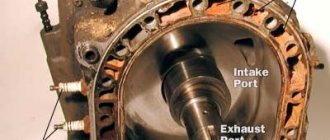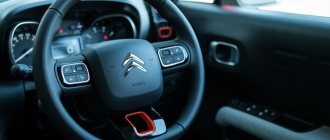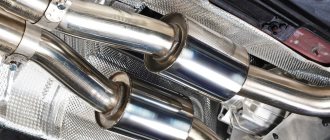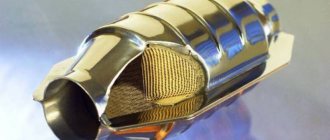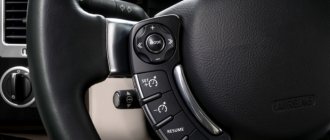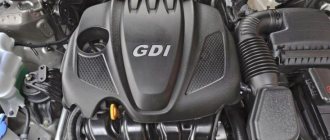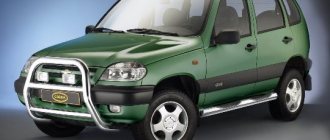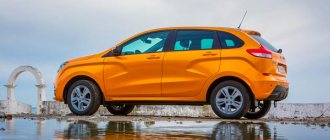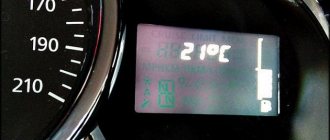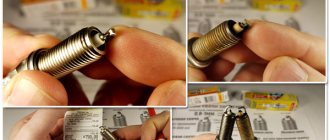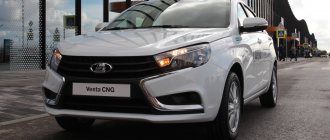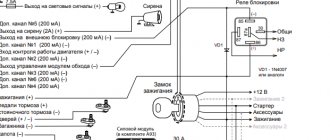With increasingly stringent environmental regulations, automakers are being forced to develop ways to make engines more environmentally friendly and efficient while maintaining performance. In this regard, forced induction systems have become widespread. Whereas in the past they were used to improve productivity, they are now used as a means of improving efficiency and environmental friendliness. Thanks to supercharging, it is possible to achieve the same performance as with naturally-aspirated engines, with fewer cylinders and a smaller volume. That is, supercharged engines are more efficient. Another method is the use of electrical energy, both individually (electric motors) and in combination with internal combustion engines (hybrid power plants). This article discusses electric turbines that combine these approaches.
Operating principle of an electric turbine
According to dealer promises, the turbine forces air into the injection system (carburetor) and leads to an increase in engine power.
Place the turbine on your scooter, instead of the standard (or no longer standard) air filter (installed directly on the carburetor), place the system activation button on the steering wheel (supplied in the kit). Ideally, when your scooter's engine spins up to medium or higher speeds, turn on the turbine and get an increase in power in the engine. In addition, the electric turbine can also be used as an auxiliary energy source for charging the battery or for use for the needs of the on-board electrical network at a time when the engine speed is insufficient for normal operation of the scooter’s electrical equipment.
This is ideally what sellers promise us...
Is it possible to make an electric version with your own hands?
Electric turbine for a car.
is it possible? Is it possible to do it yourself? Hypothetically it is possible, and many people install this on their car. Personally, I also thought about installing it on my car, but the price stopped me.
You need to solve a number of points:
1) Definitely installing a powerful generator, which is already expensive for a foreign car.
2) A powerful and compact electric motor, preferably brushless, it produces high speeds with optimal energy consumption. Personally, I have seen these for compact models, but with a power of 0.5 kW and above they are also not cheap.
3) Impeller and housing. You also need to make it yourself or buy it for maximum air injection. Also not an easy task.
4) And of course, a stabilizer or inverters to power the electric motor.
The tasks are not simple, some foreign cars do not have powerful generators, so it is very difficult to do!
But many craftsmen install it on their cars in the garage; an increase in power can actually be achieved up to 20 - 30%.
Moreover, many people install an additional air consumption sensor in the pipe in front of the turbine; it “sees” the pumped volume and automatically regulates a larger fuel supply (supplies values to the ECU) to enrich the fuel mixture. So the firmware may not be needed.
Principle of structure
It should be noted that now some German manufacturers have such superchargers in their engines. And they are installed, as you understand, in the air intake system. Mercedes, BMW and AUDI were the first to use such superchargers.
The principle here is simple - a powerful “fan” is installed, which creates a pressure of approximately 0.5 atmospheres (and possibly more). Powered by the vehicle's electrical system, it pumps additional oxygen into the engine to increase power. With fuel supply settings, you can achieve a significant increase - about 20 - 30%.
The electric turbine should also be adjusted to certain speeds, for example, at idle it should work slower, and at high speeds, correspondingly faster. It turns out to be almost an ideal system! But what’s the catch, where are the downsides? And you know, they exist.
Important points when working with a turbocharged engine
- In order for a turbocharged engine to serve for a long time, it should be thoroughly warmed up at low speeds for at least 2 minutes before each trip;
- The oil poured into the turbocharger must be of high quality. Yes, it is expensive, but saving in this case will not lead to anything good;
- it is necessary to regularly monitor the condition of both air and oil filters of the car, since even slight contamination of these elements can cause irreparable damage to the engine;
- It should be remembered that a turbocharged engine needs to be broken in. It cannot be subjected to serious loads until it has traveled at least 2 thousand kilometers. All this time, the pressure in the compressor should not exceed 0.6 bar;
- The engine with the compressor should not be turned off immediately. It is better to let it idle for at least one minute. This will cool the turbine;
VAZ largus owner reviews: all the cons, disadvantages, pros
Despite a number of disadvantages, after installing a turbocharger, the driver can expect changes for the better. The engine’s power will not only increase, but also its “gluttony” will be seriously reduced, since in a turbocharged car about 30% of unburned gasoline is not emitted into the atmosphere, but is reused
So, if the above precautions are observed, the driver will not only be able to drive faster, but will also save a lot of money
Home » Tuning » Homemade gas turbine from turbocharging. How to make a steam turbine. Preparing to install a turbocharger yourself
System performance test
To test the system, remove the live wires from the cylinders and crank the engine with the starter. If the oil pressure remains within normal limits, start the engine. Let the engine idle for 15 minutes. An engine with an installed turbocharger must undergo a run-in period of 1.5 - 2 thousand kilometers.
Try not to overload the boost and the engine during this period. To ensure that the unit is operated for a long time without breakdowns, monitor the condition of the filters, oil and air supply systems. Do not rush to turn off the engine, let it idle for a couple of minutes. This will cool the turbo.
By following this turbocharger installation scheme, you will add dynamics to the car's performance. As a result, you will feel the drive and speed.
A few words about Chinese electric turbines
HBO 2nd generation, equipment, principle of operation, pros and cons
Literally 2 years ago, the “auto Internet” simply exploded with electric turbines from China. A small “thingy” was offered, which was installed in the gap in the air intake hose, which supposedly pumped air with pressure into the engine, a promised increase in power by as much as 15%! The engine itself was an incomprehensible cooler, neither electricity consumption, nor speed, nor pumped air - there were no indicators. If you even disassemble it visually, it becomes clear that this is a cooler similar to advanced computer coolers, so what can it increase? NOTHING! So we just don’t buy - it’s a SCAM.
Now, of course, other electric turbines are starting to appear on the same Chinese sites, many are even made in the shape of a snail - ala a mechanical compressor. But again, there are no indicators of pressure, consumption, or air pumping. Think before you buy. Let's watch an educational video.
Audi shows off its E-Turbo
recently demonstrated its latest developments in the world of electric turbines with its Clubsport TT Turbo Concept, i.e. on an all-wheel drive vehicle that produces 600 hp. With. and 648 Nm of maximum torque, all thanks to a pair of turbochargers on its 2.5-liter five-cylinder engine. One of the turbines, namely the traditional type, is controlled by exhaust gases, and the second is already an electric unit.
created this concept car to demonstrate the capabilities of these electric turbochargers, telling and showing the entire automotive world that such technology is almost ready to be launched on all production cars. In the trunk of the car there is a second 48-volt electrical system, which just powers this electric compressor, thereby increasing the pressure of the engine itself at the request of electrical sensors, and this is instead of a long wait for the very moment when a wave of exhaust reaches a simple conventional turbine gases and spin the blades of the turbine itself. All these technologies certainly improve the behavior of the car, which can now reach a speed of 100 km/h in just 3.6 seconds.
“An electrically driven compressor offers significant benefits,” said Brad Stretz, Audi USA. “It revs up to maximum speed very quickly and without any noticeable lag, and all this starts before the stock turbocharger kicks in and with too little exhaust pressure,” continued Brad Stretz.
“This principle of operation of the supercharger makes it possible to install a conventional turbocharger to specifically create a high pressure charge and, therefore, for a sufficiently high engine power - while the E-turbo model guarantees quick response and powerful sprints from the lowest engine speeds throughout its entire range,” - Brad Stretz added.
This is not the first time it has demonstrated its expertise in experiments with electric turbines. Last year, the German automaker added its twin-turbo 3.0-liter V6 diesel engine to the E-Turbo model and put it all under the hood of the RS5. The result was a fairly swift and fast coupe that could reach a speed of 100 km/h in about 4 seconds, and this with a fuel consumption of some 5 l/100 km. All this made the car much faster than its regular RS5 sibling and it was more than twice as efficient in fuel consumption.
To bet or not to bet
Although there has long been a skeptical attitude towards installing turbocharging on a VAZ, turbocharged VAZs are becoming more common, there are fewer and fewer problems with the installation, and the effectiveness of this measure is becoming more and more obvious. Turbocharging of a gasoline engine or “turbocharging diesel” can be installed in a car service on any VAZ model. As tests show, with a completely insignificant increase in fuel consumption, power and torque increase by no less than 35-40%.
Is it possible to figure out the intricacies yourself and install a turbine without using the services of a car service? Of course, anything is possible. We bring to your attention a general scheme of work and some recommendations on how to install a turbocharger with your own hands.
The simplest and homemade mechanisms
At the beginning of the decade, simple, low-cost mechanisms such as computer coolers, also called electric turbines, appeared on the market. They are located at the entrance and are battery operated. Such electric turbines can be used both on a carburetor and on an injector. According to manufacturers, they increase the air flow entering the engine, accelerating it, resulting in an increase in performance of up to 15%. Parameters (speed, flow, power) are usually not indicated. It is very easy to install such electric turbines on cars with your own hands.
However, in reality, their electric motors develop up to several hundred watts, which is not enough to increase the flow volume, since this requires about 4 kW. Therefore, such a device will become a serious obstacle to entry, as a result of which productivity, on the contrary, will decrease. At best, the losses from it will be small, which will not significantly affect the dynamics.
In addition, on the Internet you can find developments for creating electric turbines with your own hands. Unlike the cheap options mentioned above, they are built on the basis of a centrifugal compressor and a brushless motor with a power of up to 17 kW and a voltage of 50-70 V, since only such a motor can provide sufficient torque and speed to rotate the compressor. The engine must be equipped with a speed controller. This system does not require an intercooler - a cold reception is sufficient. Installation of this type of electric turbines may require replacement of the generator (90-100 A) and battery (with a larger capacity, high current output). The rotation speed of the compressor is determined by the position of the throttle valve. Moreover, the dependence is not linear, but exponential.
It is advisable to create such electric turbines for cars with low-power engines up to 1.5 liters in volume, due to high energy consumption. Moreover, the larger the engine displacement, the lower the boost pressure the supercharger can create. So, on a 0.7-liter engine it will be 0.4 - 0.5 bar, on a 1.5-liter engine - 0.2-0.3 bar. In addition, such a boost will not be able to function for a long time at maximum performance due to heating. However, the controller can be configured to force activation. Due to the high cost of components, it is very expensive to make such an electric turbine. Reviews indicate a noticeable increase in productivity. From a design point of view, these mechanisms, like the cheap options mentioned above, are called an electric fan. However, they are often mistakenly called electric turbines. Now on the market there are more serious branded mechanisms that are close to homemade ones.
EAT
In the EAT, at low speeds the electric motor provides additional torque to the compressor to increase boost pressure. At the “tops” it generates energy that can be transferred to storage. In addition, the electric motor can prevent the turbine from exceeding its speed limit. However, a high back pressure effect may occur, which compensates for the energy extracted from the exhaust gases.
Due to the possibility of generating electricity from exhaust gases, such turbochargers are called hybrid. On passenger cars, depending on the driving cycle, they can generate from several hundred W to kW. This allows you to replace the generator, saving fuel.
Turbocharger selection
You can make a turbine for a VAZ with your own hands, but this is a very difficult task, so it’s better to overpay a little and purchase a ready-made unit at least on the secondary market
You need to pay attention to the fact that the small turbocharger only works at low and medium speeds
As soon as the crankshaft speed increases, the turbine is switched off. Large turbochargers, on the contrary, operate only at high and medium speeds, but at low speeds they turn off. There are several popular models:
- TD05 made by Mitsubishi. The boost is set at 3 thousand rpm, allowing you to squeeze out 250-300 hp. With.
- TD04L manufactured by Subaru, boost installed at 3 thousand rpm, power 200-250 hp. With.
- IHI VF10 this turbocharger is significantly larger than the Subarov one, it allows you to squeeze out 250 horses or more.
There are many Chinese turbochargers, their quality is very poor, but the price is reasonable. The price of a turbine for a VAZ on the secondary market fluctuates within a very wide range - from 5,000 rubles to several tens of thousands.
Device classification
The classification of the device is extensive. Today it can be asynchronous and synchronous, with a fixed rotor or stator, single-phase, two-phase and three-phase, with independent or self-excitation, with field windings or excitation from a permanent magnet.
Note! It is worth noting that at the moment three-phase models are more popular due to the rotating circular magnetic field, the balance of the system, operation in several modes and high levels of efficiency.
Equipment classification
TEDC
The TEDC is a mechanical turbine with an additional compressor driven by an electric motor. Based on the location of the compressor relative to the turbine, these systems are classified into upstream and downstream variants (upstream and downstream of the turbine, respectively). In general, they are characterized by significantly better responsiveness during transient processes on the “bottoms” due to the independence of the electric motor from the inertia of the turbine and shaft. Moreover, downstream TEDC is superior in this regard to upstream options due to the fact that the latter have a large volume to maintain pressure. Another advantage of this type of electric turbines is the minimal differences from mechanical ones.
EST
In EST, the turbine and compressor are not connected by a shaft, and each is equipped with an electric motor. This allows the compressor and turbine wheels to operate at different speeds. This design has similar advantages to ET, but unlike it, it is capable of generating energy. In addition, it has a lower temperature effect due to the separation of the compressor and turbine, as well as the absence of additional inertia from the turbine and its shaft. Separating the turbine and compressor is advantageous from a layout point of view, as it allows the air flow path to be optimized. However, this technology also requires a powerful electric motor, generator and inverters to meet the torque/inertia ratio, which comes at a cost.
Centrifugal blower
| Centrifugal blower |
Such superchargers are currently most widespread, both as a separate drive compressor and mainly as part of a turbocharger.
The main part of a centrifugal supercharger is the impeller, or impeller. It has a rather complex cone-shaped shape. The impeller blades play the most important role. The resulting efficiency of the entire supercharger depends on how well they are designed and manufactured. So, the air, passing through the tapering air channel into the supercharger, hits the radial blades of the impeller. The blades twist and throw it away by centrifugal force to the periphery of the casing, where there is a diffuser. Often the diffuser has blades (sometimes with adjustable angle of attack) designed to reduce pressure loss. Next, the air is pushed into a circular air tunnel (air collector), which most often has a snail-shaped shape (the air collector, describing a circle, gradually expands in diameter). This design creates the necessary air flow pressure at the outlet of the supercharger. The fact is that inside the ring the air moves quickly at first and its pressure is low. However, at the end of the cochlea, the channel expands, the speed of the air flow decreases, and the pressure increases.
Due to the very principle of operation, the centrifugal supercharger has one significant drawback. To operate effectively, the impeller must rotate not just quickly, but very quickly. The actual pressure produced by a centrifugal compressor is proportional to the square of the impeller speed. Speeds can be 40 thousand rpm or more, and for high-pressure diesel compressors they are close to 200 thousand rpm. And if the drive is carried out from the engine via a belt drive to a turbine pulley, the noise from such a device is quite loud. The problem of noise and service life of drive elements is partially alleviated by the introduction of an additional multiplier, which reduces the efficiency of the mechanical supercharger.
High operating speeds impose special requirements on the quality of materials used and manufacturing accuracy (taking into account the enormous loads from centrifugal forces). The disadvantages of the pumping principle itself also include a certain delay in operation. As a rule, a centrifugal supercharger provides an increase in power at fairly high engine speeds. At first the pressure increases slowly, but then, with increasing speed, it increases quite sharply
This feature makes centrifugal superchargers most suitable for applications where high speeds are more important than acceleration.
Centrifugal superchargers are very popular: the relatively low price and ease of installation have contributed to the fact that compressors of this type have almost replaced other, more expensive and complex types, especially in the field of tuning. The disadvantages of this type of supercharger are known: increased noise and wear, effective increase in power only at high speeds.
What is a heat generator
Equipment of this class is represented by two main types of devices:
- Stator;
- Notorny (vortex).
However, cavitation models also appeared not so long ago, which may in the near future become a worthy replacement for units operating on conventional types of fuel.
The difference between stator and rotor devices is that in the first, the liquid is heated using nozzles located at the inlet and outlet openings of the unit. In the second type of generators, heat is generated during pump rotations, leading to turbulence in the water.
Let's watch the video, the generator in operation, measurements:
In terms of performance, a vortex heat generator assembled by yourself is somewhat superior to a stator one. It has 30% more heat transfer. And although such equipment is presented on the market today in various modifications, differing in rotors and nozzles, the essence of their work does not change. Based on these parameters, it is still better to assemble a heat generator on your own of the vortex type. How to do this will be discussed below.
Can an electric turbine increase engine power?
Turbocharging has thoroughly taken root in engines with fuel injection, both gasoline and diesel. A strong union of turbocharging with a carburetor engine did not work out due to problems with the organization of air flows, which guarantee the flow of gasoline from the jets into the intake manifold. In theory, turbocharging can also be installed on an engine with a carburetor power system, but in practice an infinite number of problems arise.
Firstly, in order to prevent the fuel-air mixture from becoming too lean, you will need to install new high-performance fuel jets (with an opening of a larger diameter). It is not so easy to choose jets for various carburetor systems so that the engine operates intelligently in all modes.
Secondly, the boost pressure at different speeds must be different, otherwise due to an excess of air in the intake manifold, the air flow passing through the diffusers will significantly slow down, which can lead to a reduction or even a stop in the supply of gasoline.
In factory turbocharged carburetor engines, which were produced in small numbers and quite a long time ago, the carburetor was originally designed to work with a turbine. Ordinary carburetors for naturally aspirated engines are not prepared to work with a turbine.
Thirdly, the compression ratio of turbocharged engines is lower than that of atmospheric engines - for example, not 9-10, but 8.1-8.6. Thanks to this, the pressure in the cylinders on the compression stroke is reduced to safe values and the possibility of detonation combustion of the fuel is reduced. Therefore, with this reconstruction, it is desirable to reduce the compression ratio and increase the size of the combustion chamber by placing an extra gasket under the cylinder head.
There are also a number of other disadvantages, due to which the operation of a carburetor engine with a “foreign” turbine will bring a lot of problems. And the motor life can be significantly reduced.
Based on this, we can conclude that installing an electric turbine on a carburetor engine, and even more so on a carburetor scooter engine, is not profitable. Homemade electric turbines, which folk craftsmen make with their own hands, are no exception.
Danger of detonation
A car with a turbine is often susceptible to detonation that occurs in the engine due to an increase in the amount of fuel-air mixture. Several methods can be used to prevent the occurrence of danger:
- use fuel with a high octane number;
- enrich the air-fuel mixture to reduce engine efficiency. This method requires constant monitoring of fuel consumption, since excess fuel will burn outside the cylinders, heating the turbocharger, exhaust manifold and exhaust tract;
- reduce the ignition timing;
- reduce the compression ratio, for which special pistons are installed.
Fuel your car with high octane fuel
In order for the engine and turbine of a car to work correctly, they must be “correctly” controlled, for which the best option is to use software. The program must be configured for a specific engine, since any other setting may damage it.
Relevance
Despite their good performance, electric turbines are not currently widely used in production vehicles. This is due to their high cost and complexity. In addition, improved versions of mechanical turbines (twin-shaft and variable geometry) offer similar advantages over the original modifications (albeit to a lesser extent) at a much lower cost. EST now uses Ferrari in its Formula 1 engine. Mass use of electric turbines will begin early next decade, according to Honeywell. It should be noted that electric superchargers are already used on some production cars, such as the Honda Clarity, as they are simpler.
In what cases is turbocharging equipment necessary?
Many car owners want to equip their car with a turbocharger to increase power characteristics. Modern cars, equipped with engines with a large number of horsepower, do not require such modernization.
Owners of domestic cars that are not particularly powerful are taking this step. It makes sense to equip a small car with a turbocharger. Even a slight increase in horsepower in their engines will be noticeable and will give them better acceleration, improving the dynamics of their performance. This will give you more confidence when overtaking other vehicles on highways.
Advantages and disadvantages
The turbine drive of the electric motor eliminates the main disadvantages of mechanical turbochargers.
- There is no lag, since the electric motor can provide a very high speed of rotation of the rotor.
- There is no turbo lag caused by a lack of exhaust gases, since in this case the lack of energy is compensated by the electric motor.
- The electric motor allows you to maintain boost during transient processes like anti-lag without the negative effects of the latter.
- This ensures a wide operating range and uniform torque.
- Some types of these mechanisms are capable of generating electricity, reducing the load on the generator and reducing fuel consumption.
- It is possible to recover lost energy, as Ferrari did in its Formula 1 engine.
- Electric turbines operate in more gentle conditions and at lower speeds (100 thousand instead of 200-300 thousand).
However, this technology has a number of disadvantages.
- Great complexity of the design, including an electric motor and controllers.
- This results in a high cost.
- In addition, the complexity of the design affects reliability.
- Due to the large number of structural elements (in addition to the turbine, this includes an electric motor, controllers, and battery), such turbochargers are much larger and heavier than conventional ones.
In addition, each type of electric turbine is characterized by specific features.
| Type | E.C. | EAT | EST | TEDC upstream | TEDC downstream |
| Advantages |
|
|
|
|
|
| Flaws |
|
|
|
|
|
In terms of durability, according to IHI, electric turbines will be equivalent to mechanical ones due to operation under the same conditions in a more gentle mode with greater design complexity.
EAT
In EAT, a high-speed electric motor is mounted between the turbine and compressor, usually on a shaft. Due to the fact that it is not the main source of energy, low power electrical components are used. This results in low cost. In addition, such turbochargers have the ability to self-determine the rotor position and are characterized by good generating and motor capabilities. The main problem is the high temperature impact on the electric motor, especially if it is installed inside the housing.
There are various methods to solve it. For example, BMW installed clutches to allow the electric motor to be connected and disconnected from the shaft. Thanks to this, the motor can be placed outside the turbine. G+L inotec used a permanent magnet motor with a large air gap, which can also be located outside. The inner diameter of the stator is equal to the outer diameter of the compressor, and the outer diameter of the rotor is equal to the output diameter of the shaft. The air gap can serve as an air inlet channel. This provides benefits in terms of cooling, inertia and thermal effect. In addition, in terms of thermal stability and thermal regulation, induction electric motors with variable magnetic resistance and universal commutator motors are more preferable compared to a motor with surface permanent magnets.
Disadvantages of the electric option
Many of my readers think that making such a system is very simple, you need to take some kind of cooler and insert it into the air intake pipe and that’s happiness! Such “miracle coolers” are usually sold in Chinese online stores; we’ll talk about these types below.
However, guys, not everything is so simple here. In normal (idling) mode, a naturally aspirated 1.6-liter engine consumes approximately 300 - 400 liters of air per hour of operation. And at high speeds, say 4000 - 5000, we multiply this figure by 4 - 5, that is, 1200 - 1600 liters. Just imagine this volume! If you calculate the minute consumption 300/60 = 5 liters per minute, or 20 at high speeds.
So - the electric turbine should increase this figure, and not slow it down! If you install a weak engine, it will not pump up the required pressure, but will create an “air lock” effect, that is, with its blades it will slow down the flow of air into the engine and interfere with normal passage.
Now imagine what an electric version of the engine is needed to pump such a volume! I repeat, to increase performance you need at least 6 - 7 liters of air at idle, and 25 at high, and this is for the 1.6 liter version; for larger volumes you need more.
If we draw an analogy with German manufacturers, then they use at least a brushless 0.5 kW electric motor, which rotates at crazy speeds, can reach up to 20,000 and its pressure capacity ranges from 1 to 5 atmospheres.
For more powerful cars, more powerful engines up to 0.7 kW are used.
As it becomes clear, a standard generator may not be able to handle such electricity consumption, so it is replaced with a more powerful one, or an additional one is installed.
And as you know, high energy consumption simply slows down the generators, and therefore increases engine braking, which will affect its output and reduce efficiency.
However, the experiments carried out revealed an increase in productivity by approximately 20–30%, which is significant. But due to the complexity and high cost of the devices, application on cars is not yet in mass production.
For example, mechanical compressors are much cheaper and more efficient. Sometimes the difference in price can reach 5 – 7 times.
General principles
Non-electric forced induction power source systems are divided into turbochargers and blowers. Electrical systems are based on them and are aimed at increasing transient performance and minimizing lags.
An electric supercharger, according to Honeywell, is an engine-driven compressor that is mounted on the supercharger. That is, this is an additional device for a turbo engine. An electric turbine is an analogue of a mechanical turbine. The drive in this case can be implemented in various ways.
According to the classification of researchers from the University of Wisconsin-Madison, forced induction electrical systems are differentiated by design and principle of operation into the following types:
- electric blowers (EC/ET/ES);
- turbines with electric assist (EAT);
- electrically separated turbines (EST);
- turbines with additional electrically driven compressor (TEDC).
How to install an air blower yourself
There are several approaches that allow you to install a mechanical air blower on VAZ family cars with your own hands. This means making a device yourself that provides turbo mode or boosting the engine, or using a ready-made KIT kit.
Homemade supercharger for VAZ
With this approach, the mechanical air blower will be decisive. The entire future design depends on it. The main thing is to find an air supercharger from an imported car that meets the requirements, or you will have to use a homemade one. This is also possible, and in this case suitable parts and components from completely unexpected devices, for example, a vacuum cleaner, are used.
When making such a homemade air supercharger, you need to take literally everything into account - dimensions, weight, placement in the engine compartment, how and where the drive pulley and belt will be located, the performance of this device, operating modes (short-term or long-term), the possibility of lubrication and much, much more. Once the compressor becomes clear, it is necessary to calculate the implementation of the turbo mode for the engine.
Here it is necessary to take into account how the fuel and cooling system of the car will be changed, what changes need to be made to its control and how to do this, what pressure will be acceptable for safe operation of the engine when implementing a turbo mode using such a device.
Even the far from complete list of questions shown shows that making a homemade air supercharger for a VAZ of any family, be it 2107, 2106, 2114, 2112, is quite difficult, but possible. An example would be a photo showing that such work has been successfully completed. True, this is not a VAZ, but the fact itself is important - it is possible to make a homemade air compressor in which its drive unit is connected to the engine crankshaft.
Do-it-yourself drive supercharger - from a KIT kit
Yes, there are such kits on sale that allow you to implement the turbo mode in VAZ 2107, 2106, 2114, 2112 cars with your own hands. As a rule, it includes everything needed to assemble and install such a device on a car - the compressor itself, belts, drive unit , brackets and air ducts. What such a kit is like can be seen in the photo below.
The main advantage of this approach to implementing the turbo mode on your car is the simplicity and complete adaptation of technical solutions to a specific option - 2107, 2106, 2114, 2112. As a rule, the manufacturers of kit kits are Chinese manufacturers, which ensures their fairly reasonable price.
As an advantage of implementing the turbo mode in this way, it is worth noting that it is tailored specifically to VAZ cars of one model or another (2107, 2106, 2114, 2112). The advantages of this approach also include the fact that under some conditions, when the level of additional pressure created is not more than half a bar, no intervention is required in the vehicle’s fuel system.
It is inappropriate to describe the procedure for implementing the turbo mode from such a set; each of them has its own assembly instructions. The disadvantages include the country of origin, but it depends on your luck. What the car looks like after modification and how to carry it out will additionally help you understand
One of the ways available to car enthusiasts to boost the engine of an old car and give it a new life is to install an air supercharger. You can do this work yourself if you use commercially available KIT kits for VAZ cars.
Rate the usefulness of the article!
Conclusion
When looking for a mechanical supercharger, car enthusiasts usually have to choose between centrifugal and positive displacement compressors. Their applicability is indicated in the characteristics of the unit
However, just in case, a car enthusiast should pay attention to the boost pressure characteristics and compare it with the indicators from the table of compression ratios (this information can be found on the Internet). A correctly selected supercharger has virtually no effect on the service life of the engine, however, we still advise checking the cooling system of the power unit and clutch
After installing the supercharger, it is recommended to check the condition of the oil more frequently and strictly adhere to the regulations for replacing the fuel and air filters. If you are planning on installing a more powerful unit, you may need to replace the camshaft, water pump, manifold, valve cover, spark plugs, rockers, pistons, intake and exhaust valves.
